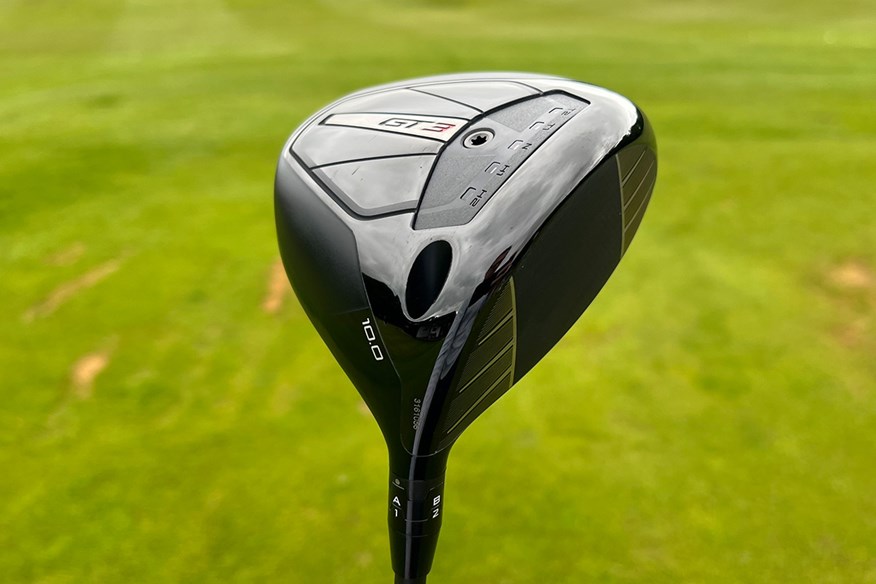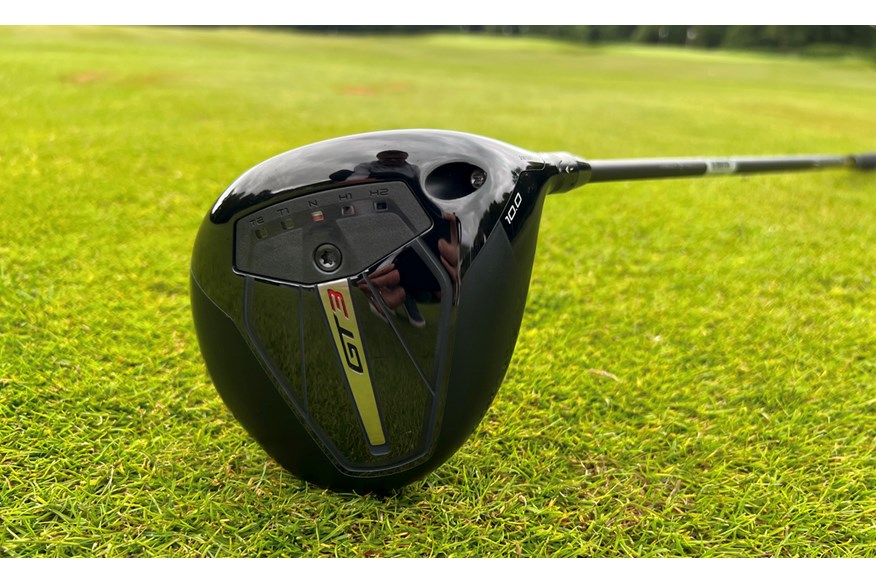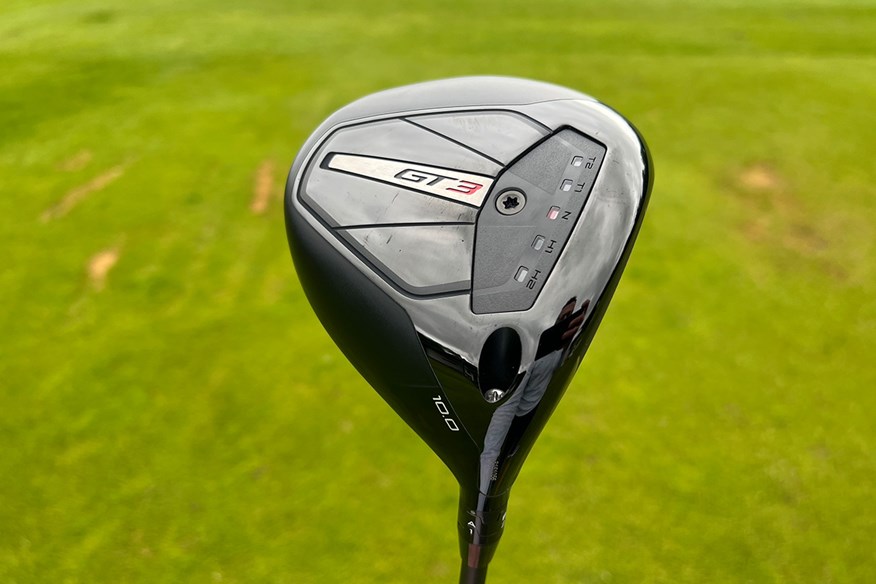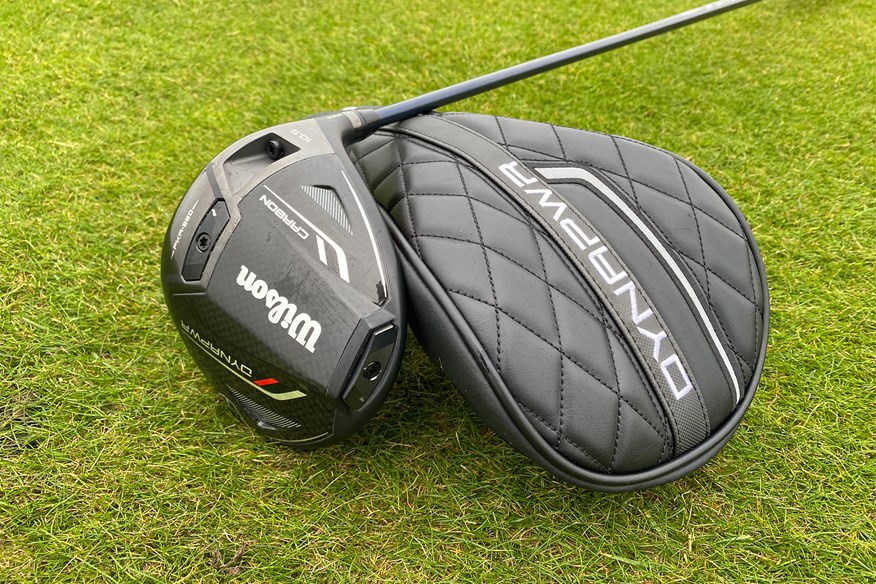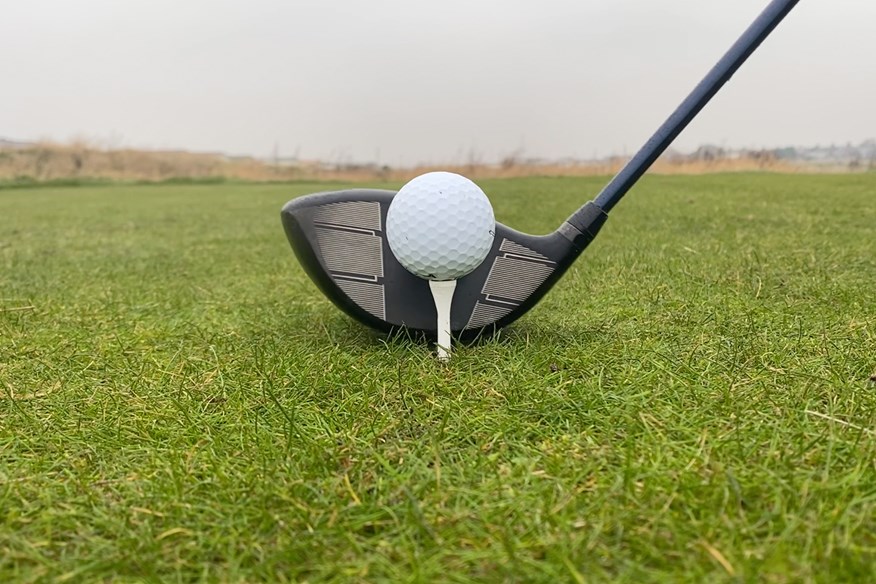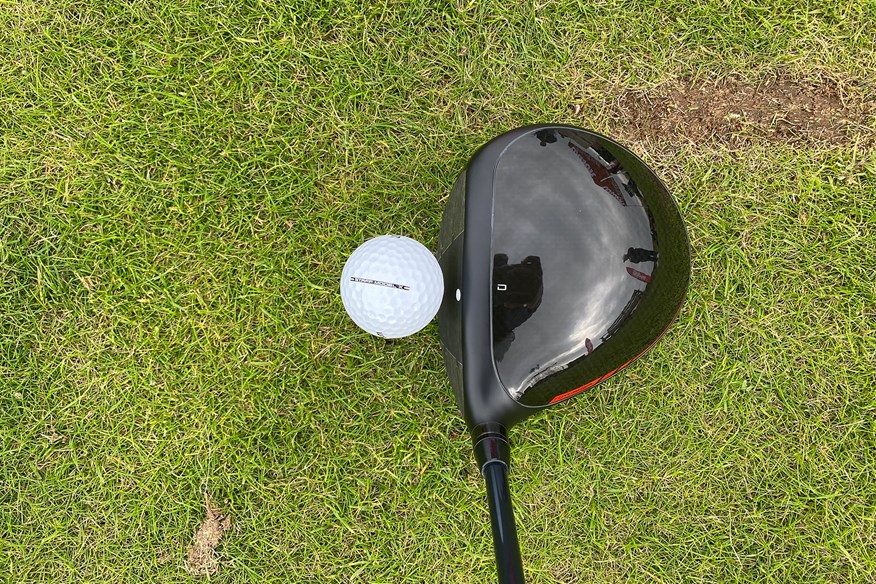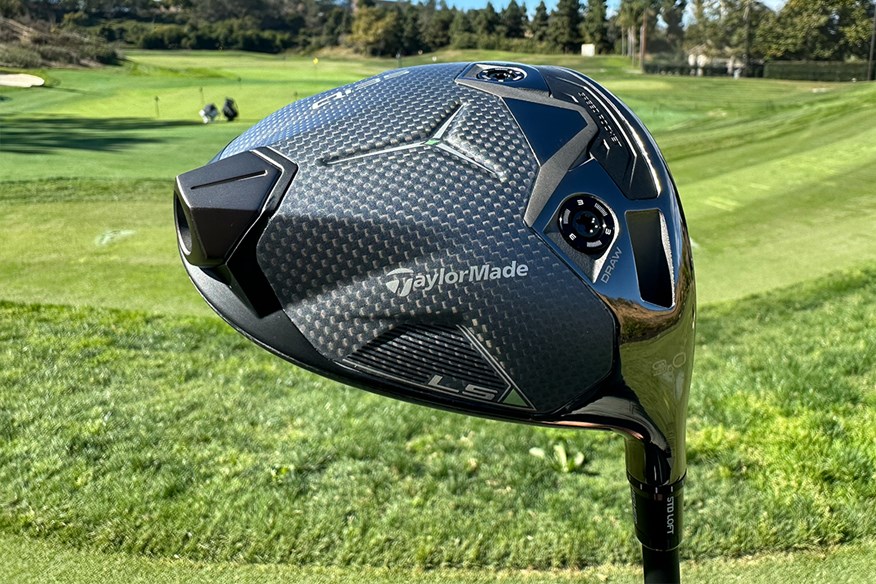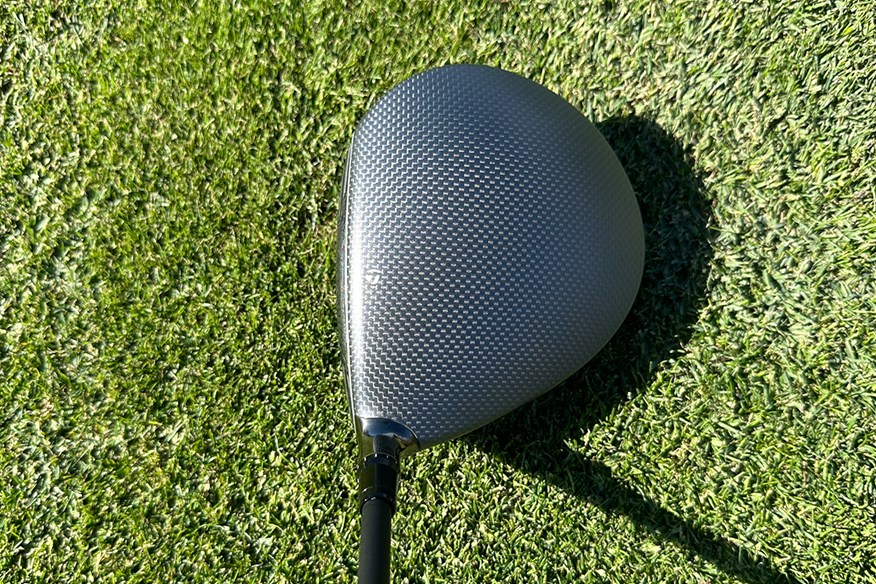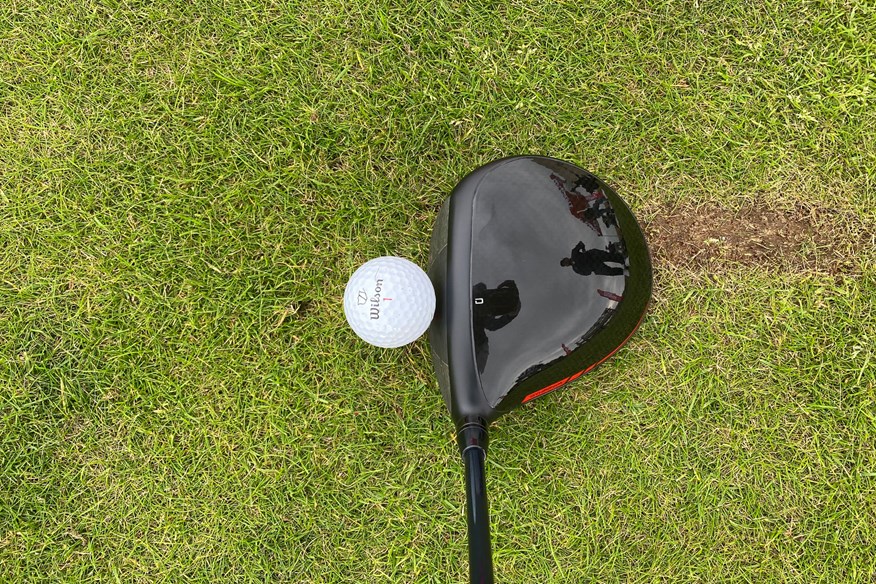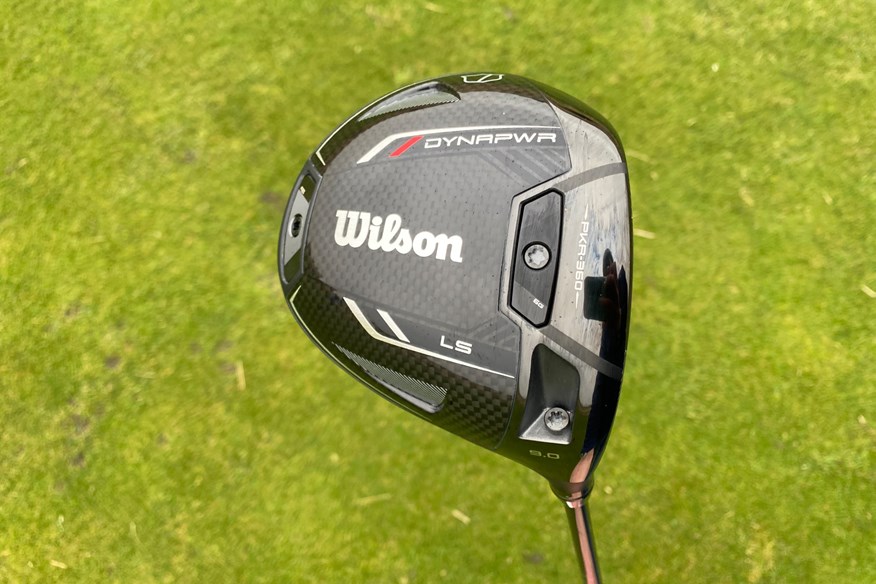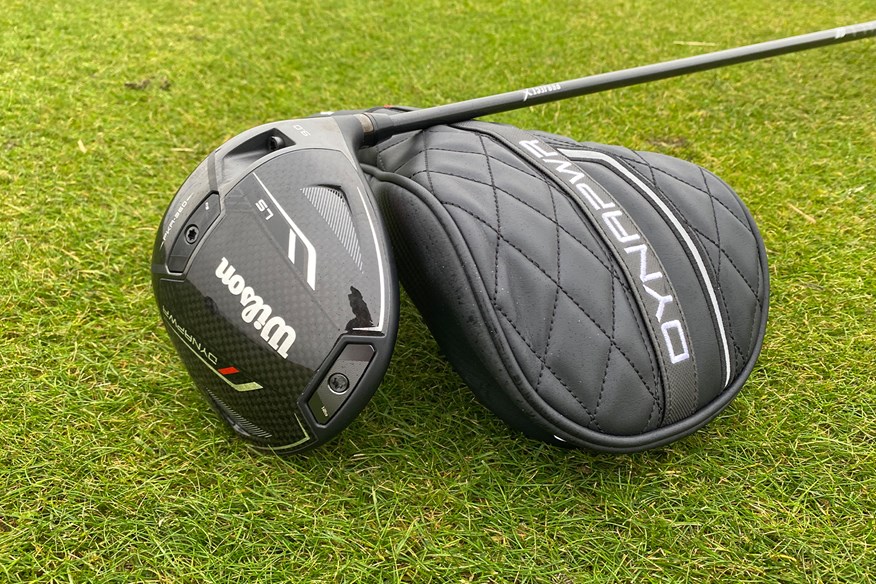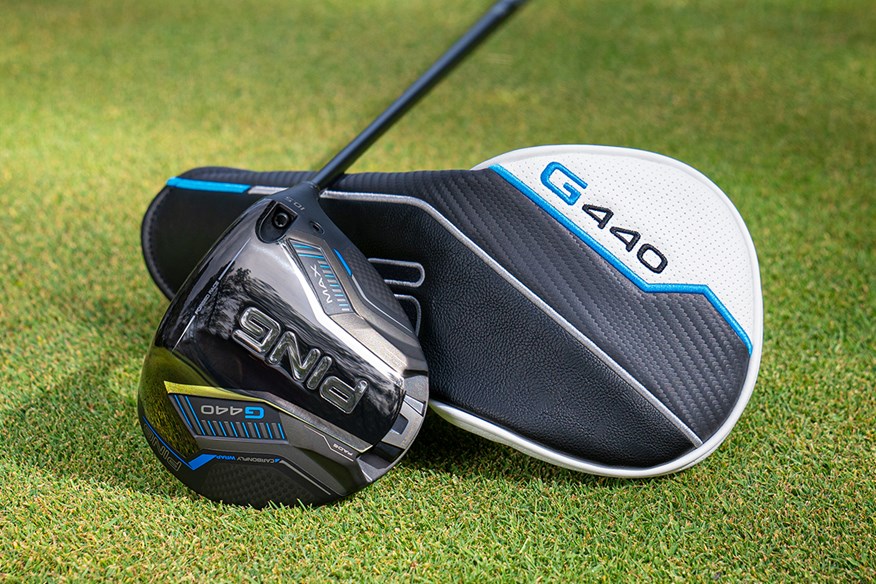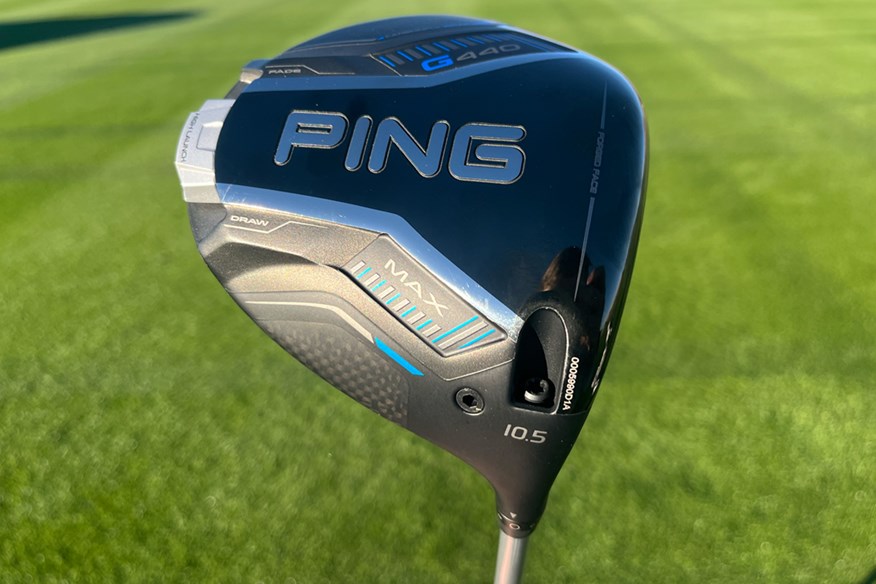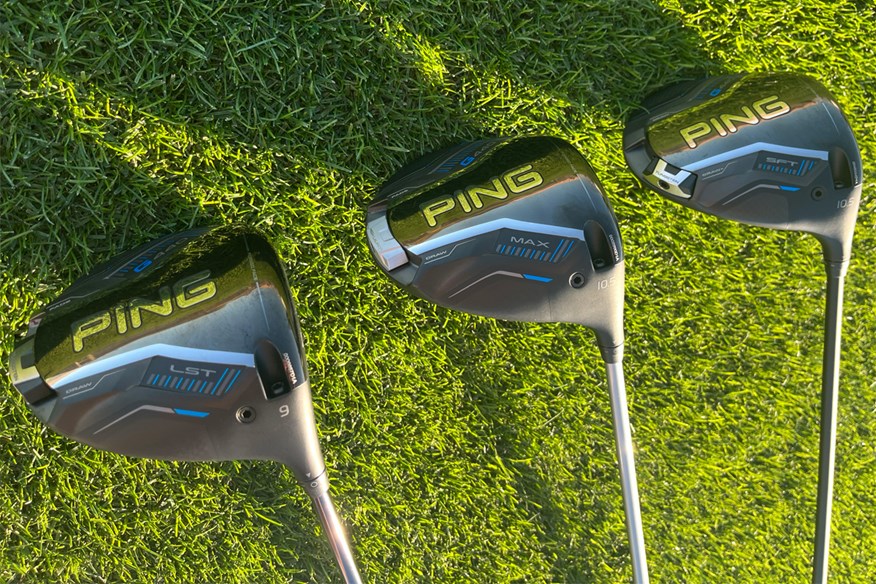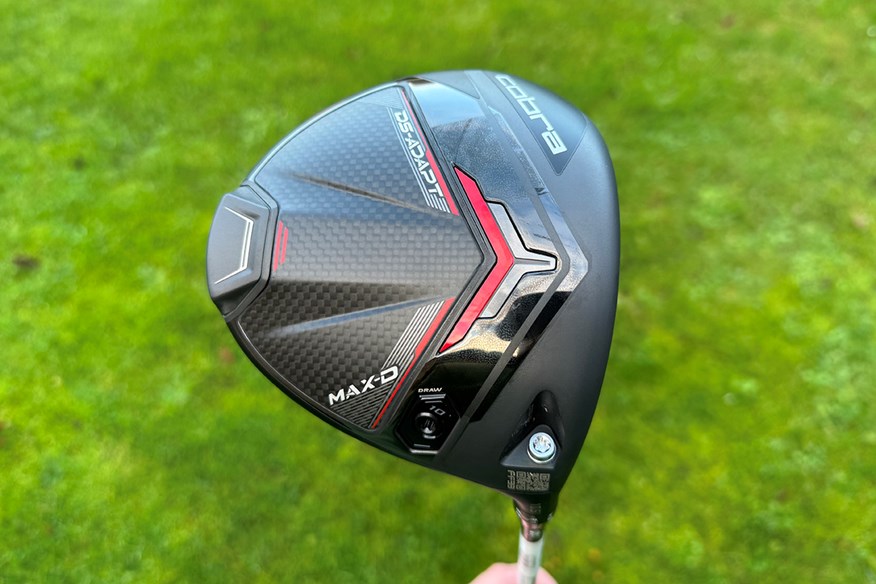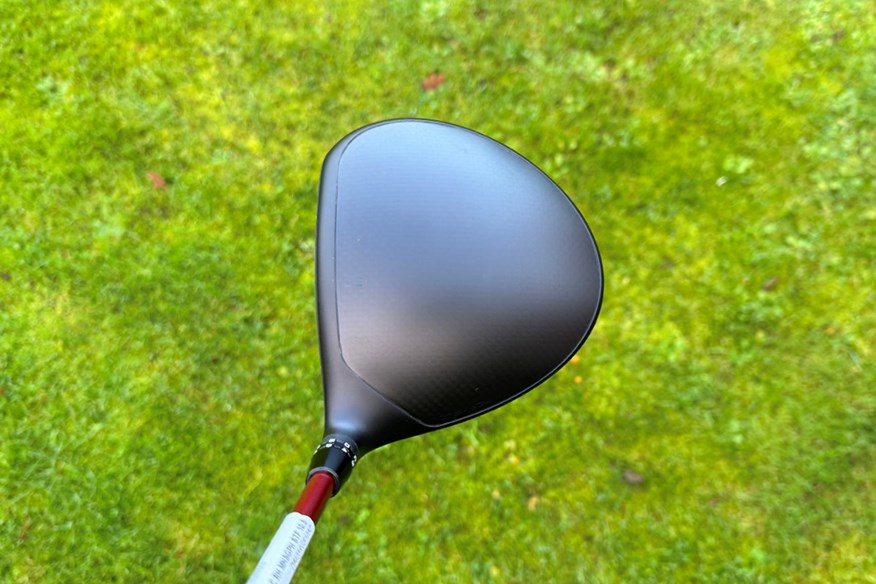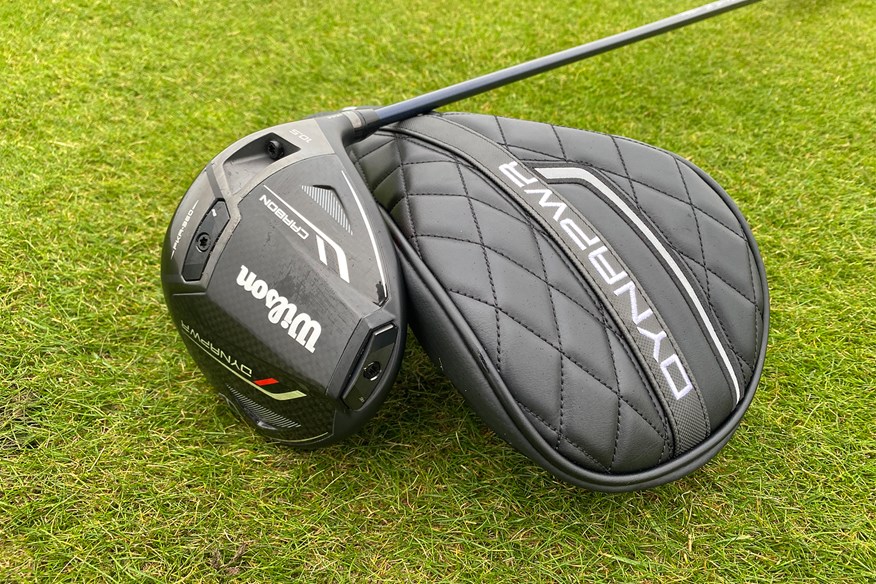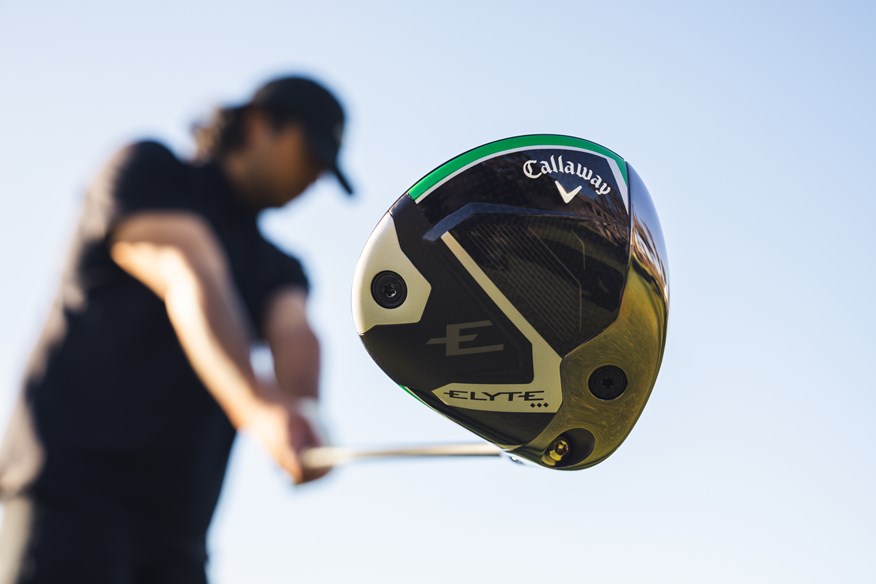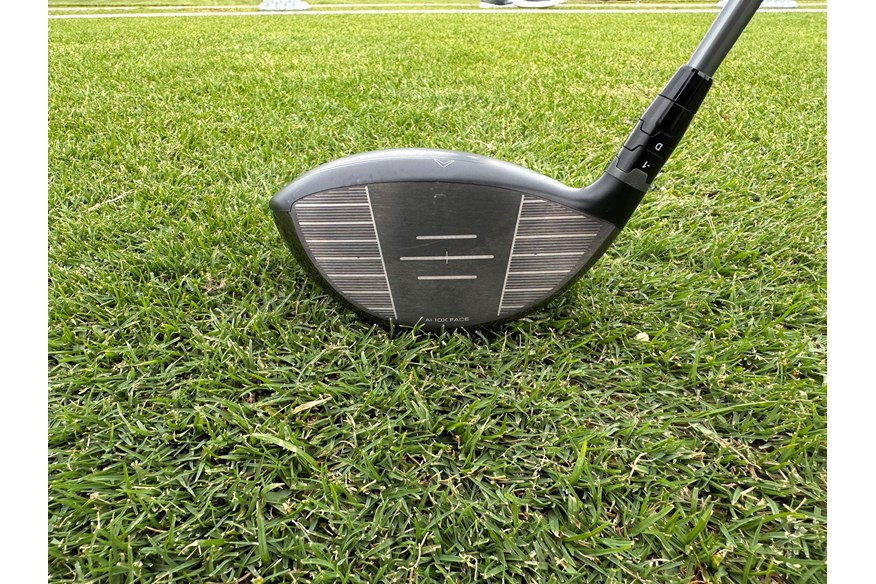Best Golf Drivers 2025: We’ve tested all the latest drivers and there’s one clear winner
Last updated:
Click here to find out how we conducted our 2025 golf drivers test
Our expert team has tested all the latest models on a launch monitor to help you choose the best golf driver for your game in 2025.
With so many models to select from, picking between the best golf drivers for your game can be tough. To make life easier, our pro has tested all the latest models head-to-head on a launch monitor to ensure our opinion on which model will be best for your game is backed up by the data.
JUMP TO:
- Best golf drivers – my top picks
- How to choose the right type of golf driver for your game
- Why custom fitting is important
- Best Overall 2025 Golf Drivers
- Best Low Spin Drivers
- Best Max Forgiveness Drivers
- Best Core Drivers
- Our test pro’s favorite driver
- Full data comparison
- Explaining the numbers
- Driver buying guide
- Driver frequently asked questions
Best Golf Drivers 2025 – our top picks
You’ll find all the data and verdicts on each model further down this page, but if you’re in a hurry, here are our top picks.
Best overall golf driver: Titleist GT3 Driver | VIEW OFFER
Best low-spin driver: TaylorMade Qi35 LS Driver | VIEW OFFER
Best forgiving driver: Ping G440 Max Driver | VIEW OFFER
Best core model driver: Wilson Staff Dynapwr Carbon Driver | VIEW OFFER
Our Test Pro’s choice: Srixon ZXi LS Driver | VIEW OFFER
Our Expert’s choice: Callaway Elyte Driver | VIEW OFFER
Surprise Performer: Wilson Staff Dynapwr LS Driver | VIEW OFFER
How to choose the right type of golf driver for your game
There are three main types of golf drivers, with most manufacturers offering a model within each category.
Low-spin drivers
The name says it all. Low-spin drivers are designed to reduce spin and are typically best suited for golfers with faster swing speeds. They are generally less forgiving than other models.
Maximum forgiveness drivers
The most forgiving drivers go all out to offer maximum stability and forgiveness. Don’t be fooled into thinking these are only for high handicappers, though – plenty of highly skilled golfers benefit from a maximum forgiveness driver. Draw-biased drivers also fit in here.
Core/standard drivers
These core (or standard) models are designed to offer a good blend of everything.
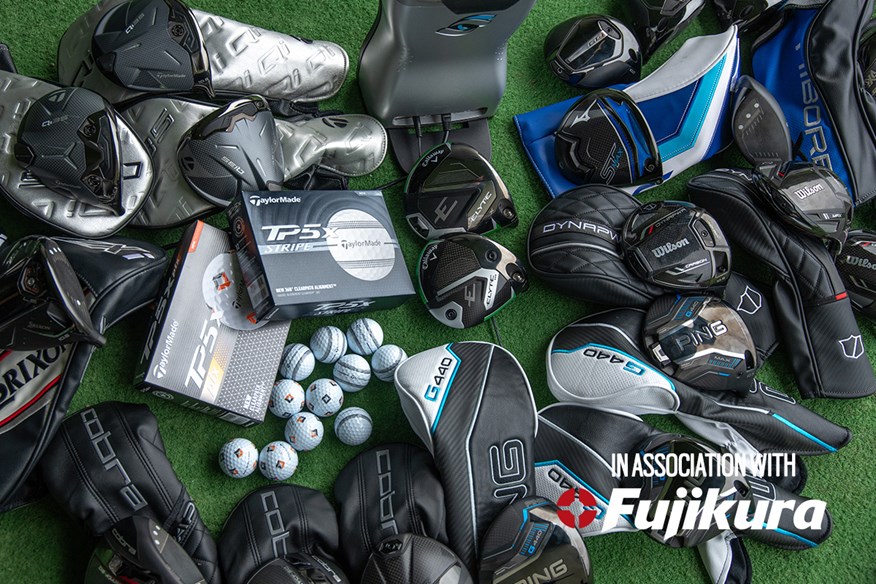
Why custom fitting is important
Whilst our test will hopefully help you shortlist some drivers that will work best for you, we always recommend getting a proper custom fitting before deciding on an upgrade. It’s the only way to ensure your new driver is optimised to your swing and, without a fitting, you could be leaving serious distance gains on the table. I say that as a man who carried out more than 5,000 fittings in my previous job – read my full guide to fittings and fitting myths here.
As an example, we tested all the heads in 10.5° lofts and standard settings to create a fair comparison, but it’s not necessarily the setup our test pro would be fitted into. His perfect setup in the TaylorMade Qi35 driver would be a 9° loft with the heavier weight in the forward position tweaked to the weight position. With that setup, he generated an extra 19.9 yards of carry distance, thanks to a huge gain in ball speed and significantly reduced spin.
The shaft was the same and the heads were otherwise identical, so it proves what a difference the correct setup can make.
The long and short of it is go and get fitted; you could be missing out on more than you’d think.
| TaylorMade Qi35, 9º Loft, Weight Forward | TaylorMade Qi35, 10.5º, Weight Rear | Fitted Performance Change | |
| Ball Speed | 169.7 mph | 162.4 mph | Gained 7.3 mph |
| Carry | 295.7 yards | 275.8 yards | Gained 19.9 yards |
| Landing Angle | 37.7º | 41.9º | Decreased by 4.2º |
| Height | 31.7 yards | 36.7 yards | Decreased by 5 yards |
| Spin | 2226 rpm | 2856 rpm | Decreased by 630 rpm |

Best Golf Drivers 2025
Best Golf Drivers – Overall
Everything you need from a driver
Here it is! The Best Overall driver of 2025 is the Titleist GT3! There are some very impressive stats to go along with the understated but beautiful looks, but what we really love is the consistency. GT3 came second for ball speed and carry distance, but with 1mph of ball speed and only 3.1 yards of carry deviation, we also saw through-the-roof predictability. That is seriously impressive from Titleist, although with the new technology introduced with the GT family, we weren't at all surprised to see the GT3 top our rankings for 2025. The GT3 itself is pushing towards the better player with offerings available from Titleist, but don't let that put you off. The ball speed retention on off-center strikes was noticeably better than previous models by Titleist.
What our tester says:
You can’t deny how good this driver is. I’m not a massive fan of a gloss finish, as we’ve talked about, but it’s got great appeal across the board. I’d be quite happy playing this club, and with the adjustability on offer too, I think a lot of amateur golfers would be too.
You can read our full review of the Titleist GT3 Driver here
Key drivers test data:
Ball Speed 165.7 mph | Carry 292.8 yards | Spin (Total) 2,378 rpm | Launch Angle 13.0º | Height 38.9 yards | Descent Angle 41.6º | L-R Dispersion 25.2 yards
Pros
- The Best Overall Driver of 2025
- 2nd Highest Ball Speed and Carry
- 11th Tightest Dispersion
- Impressive consistency
Cons
- Alignment Aid isn't as strong as other models
| RRP | $649.00 / £579.00 + $849.00 / £749.00 (Premium) |
| Lofts | 8° / 9° / 10° / 11º (RH/LH) |
| Head Size | 460cc |
| Lie | 58.5° |
| Standard Shaft Length | 45.5” |
| Stock Shaft Options | Project X Denali Red / Mitsubishi Tensei 1K Blue / Project X HZRDUS Black 5th Gen / Mitsubishi Tensei 1K Black |
| Premium Upcharge Shafts | Graphite Design Tour AD-VF / Tour AD-DI / Tour AD-UB |
| Stock Grips | Titleist Universal 360 Grip |
- Proprietary Matrix Polymer material
- Thermoform Process Crown
- Split Mass Internal Technology
- Improved Aerodynamics
- Enhanced SpeedRing VFT
- Tour-Inspired Graphics
A surprise, to be sure, but a welcome one
The silver medal winner in our overall driver of the year category, and we’re just as pleasantly surprised as you are! We’ll tell you who isn’t surprised though, and that’s Wilson's R&D team. Having been on the rise across several club categories these last few years, the Dynapwr Carbon finished 1st and 2nd for carry within the Core models category in its front and rear settings, respectively. What our Testing Pro noticed upon first hit was how premium the Wilson Dynapower family look and feel for 2025. There never seems to be as much buzz for Wilson in comparison to other OEM's for release season, but we've seen a significant shift this year with the feedback, and it is completely justified.
What our tester says:
The Carbon, like the LS, frames really nicely behind the ball but the performance is just so impressive compared to what you maybe expect from a Wilson product. They’re challenging the biggest brands this year, and the numbers we saw speak from themself. The forgiveness on display is seriously impressive.
You can read our full review of the Wilson Staff Dynapwr Carbon Driver here
Key drivers test data:
Ball Speed 165.3 mph | Carry 284.8 yards | Spin (Total) 2,682 rpm | Launch Angle 11.7º | Height 37.4 yards | Descent Angle 42.3º | L-R Dispersion 16.1 yards
Pros
- Winner of the Best Core Driver of 2025
- Clean sweep of Best Core Distance and Best Core Accuracy
- Movable Weight System
- Best Headcover of 2025
Cons
- Graphics and looks have produced mixed reactions
| RRP | $549.99 / £480.00 |
| Lofts | 8° / 9° / 10.5° / 10.5° Lite |
| Head Size | 460cc |
| Lie | 57.0° |
| Standard Shaft Length | 45.75” |
| Stock Shaft Options | Fujikura Ventus TR Blue | (10.5° Lite) UST Helium NCT 4 Lightweight |
| Stock Grip | Lamkin Crossline 360 Black |
- Tour-inspired
- Sound engineered
- PKR-360
- Open Hosel Construction
- Full Adjustability
Continued excellence from one of the biggest names in golf
Fitter's Choice and Bronze Best Overall Driver of 2025
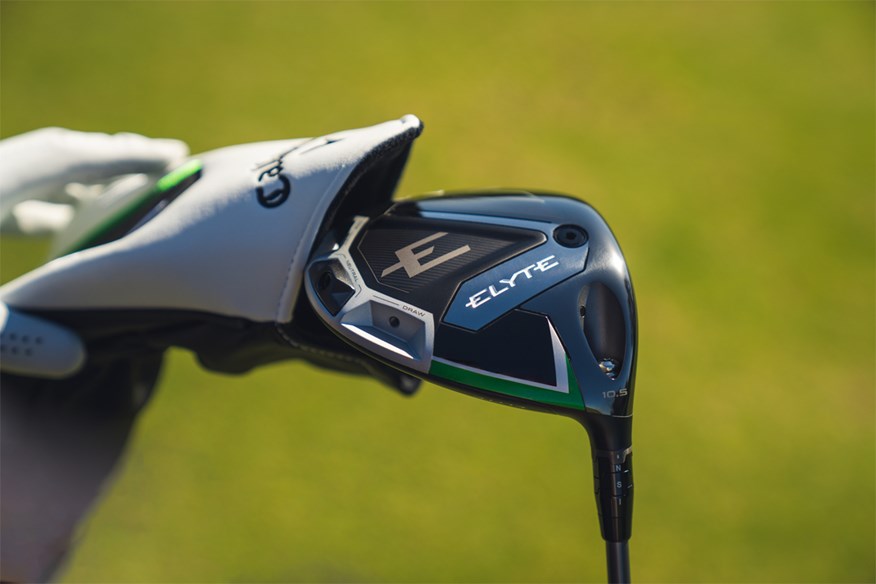

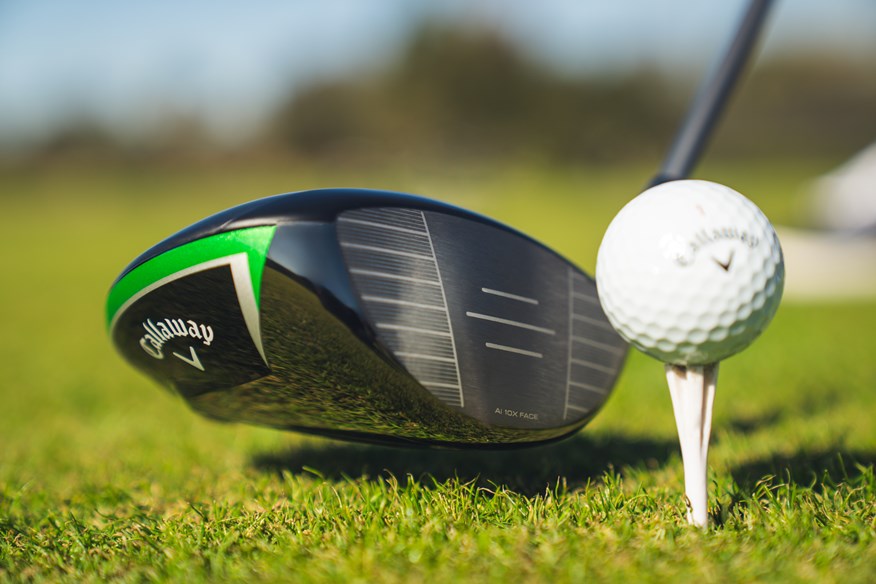
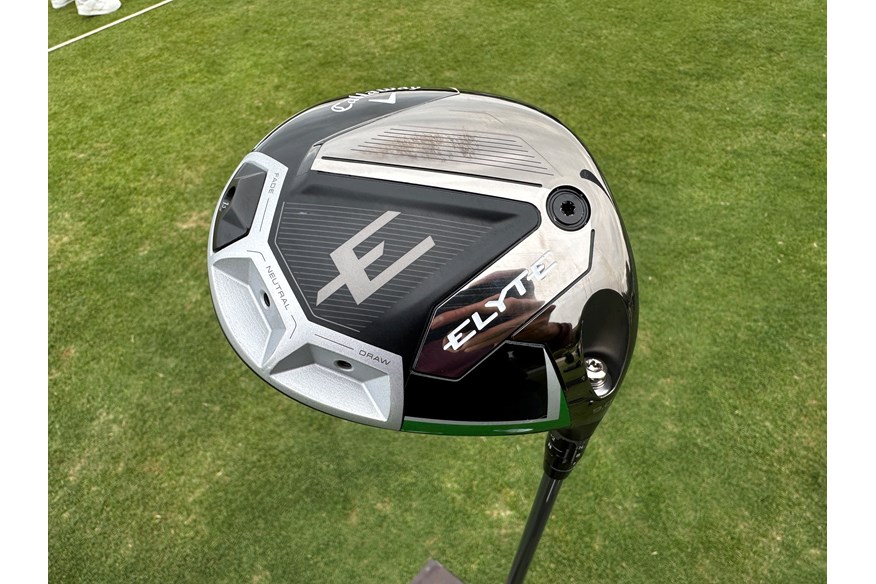
The Elyte driver has been unlucky in this year’s driver test! If it weren’t for one other model, Elyte would’ve taken a clean sweep of the Core model category, and deservedly so. It’s consistent, and powerful, and we think it’s a driver that will work for a huge variety of golfers. The feedback Callaway have received for Elyte this year has felt a little like mob mentality based on the initial aesthetic response on social media. Is it the best looking driver of the year for shelf appeal? No. The playing profile is gorgeous though, which we can argue is more important. The performance we have seen from the Callaway Elyte from various players has us struggling to recommend any driver over this for the everyday golfer.
What our tester says:
The finish on the crown of this driver is superb. From the face, it’s fast and feels forgiving if I do mishit the club. Callaway have been making great drivers for a while now, and this shows why they are market leaders. I can see how versatile this club is for me, which means it'll have even higher performance for the amateur golfer. I'd probably pick the Titleist GT3 over this, but I would push most club golfers the other way. This is my Expert's Choice driver of 2025, the driver I'd recommend to all amateur golfers tuning in.
You can read our full review of the Callaway Elyte Driver here
Key drivers test data:
Ball Speed 165.3 mph | Carry 283.3 yards | Spin (Total) 2,692 rpm | Launch Angle 11.4º | Height 35.7 yards | Descent Angle 40.8º | L-R Dispersion 26.1 yards
Pros
- Bronze position in Best Overall Driver of 2025
- Fitter's Choice Award
- Silver place in all Best Core awards
Cons
- Spin was higher than the mean average during testing
| RRP | $599.99 / £569 |
| Lofts | 9º (RH/LH), 10.5º (RH/LH), 12º (RH) |
| Head Size | 460cc |
| Lie | 57º |
| Stock Shaft Length | 45.75" |
| Stock Shaft Options | True Temper Project X Denali Charcoal 50g and 60g; Mitsubishi Chemical Vanquish PL 40G |
| Stock Grip | Golf Pride Tour Velvet 360 |
- Enhanced Aerodynamics
- Elyte Speed Modeling
- Thermoforged Carbon Crown
- Ai10X Face Design
- Draw and Fade Adjustability
Best Low Spin Drivers 2025
Massive distance for those who can handle it
TaylorMade have outdone themselves with the Qi35 LS, in terms of how much distance is on offer. With the fastest ball speed and carry yardage from any driver this year, it’s an outstanding product for those looking for pure power. There’s a legitimate argument to be made that the Qi35 LS could have made it into the Best Overall Top 3, but we were concerned that this head may not be viable for golfers who miss the centre of the face. If you can keep control of your strike and direction though, you won’t beat this driver in 2025. The 460CC head does have a slightly smaller profile, which you'd expect from a lower spinning model. Compared to the previous TaylorMade Qi10 LS, we saw slightly higher launch and a touch faster ball speed, which is to be expected with the new and improved CG Projection.
What our tester says:
Ridiculously fast. The LS feels like the ball is never going to stop when you catch it right. Will it work for most golfers? Probably not, compared to forgiveness of the normal Qi35 head, but my goodness it’s powerful. The looks are just as good as the feel, the Chromium Carbon sits so elegantly at the playing profile and is almost asking you to swing it fast. I feel like my swing is built for the Qi35 LS, although I think most club golfers should side towards the normal Qi35.
You can read our full review of the TaylorMade Qi35 LS Driver here
Key drivers test data:
Ball Speed 167.0 mph | Carry 298.0 yards | Spin (Total) 2,256 rpm | Launch Angle 13.0º | Height 38.2 yards | Descent Angle 40.3º | L-R Dispersion 23.3 yards
Pros
- Best Low Spin Driver Award winner of 2025
- Outstanding Modern Looks
- The Longest Driver of 2025
Cons
- Not forgiving enough for all golfers' needs
| RRP | £529.00 / $649.00 |
| Lofts | 8º (RH), 9° / 10.5° (RH/LH) |
| Head Size | 460cc |
| Lie | 56º |
| Stock Shaft Length | 45.75” |
| Stock Shaft Options | Mitsubishi Kai’Li Blue DarkWave CB 60g / Mitsubishi Kai'Li White DarkWave 60g |
| Stock Grip | Golf Pride Z-Grip Black/Silver |
- Ultra Low Center of Gravity
- Multi-Material Construction
- High Moment of Inertia Design
- Trajectory Adjustment System
- Carbon Twist Face
Controlled Power
Our Best Overall driver of the year was also a strong performer in the Low Spin category. There's some outstanding performance to be found with this head, with a very close second place to the Qi35 LS in Ball Speed and Carry, with the ball speed retention impressive to us and our testing pro throughout our data gathering.
Ultimately, though, the low spin category has to do what it says on the tin and the GT3 sat somewhere in the middle of the pack for LS models. This probably says more about who this driver is aimed at, as Titleist will still expect this to be a fittable for more than just low-spin players. You can certainly fine tune this driver head to be a a leader in the Low Spin category, as you have a variety of adjustable element in the head and shaft for every type of golfer.
What our tester says:
You can’t deny how good this driver is. I’m not a massive fan of a gloss finish, as we’ve talked about, but it’s got great appeal across the board. I’d be quite happy playing this club. It doesn't feel as fast off the face as the TaylorMade Qi35 LS, but I wouldn't define this as a negative. The feel is more premium, which I actually preferred.
You can read our full review of the Titleist GT3 Driver here
Key drivers test data:
Ball Speed 165.7 mph | Carry 292.8 yards | Spin (Total) 2,378 rpm | Launch Angle 13.0º | Height 38.9 yards | Descent Angle 41.6º | L-R Dispersion 25.2 yards
Pros
- The Best Overall Driver of 2025
- 2nd Highest Ball Speed and Carry
- 11th Tightest Dispersion
- Impressive consistency
Cons
- Alignment Aid isn't as strong as other models
| RRP | $649.00 / £579.00 + $849.00 / £749.00 (Premium) |
| Lofts | 8° / 9° / 10° / 11º (RH/LH) |
| Head Size | 460cc |
| Lie | 58.5° |
| Standard Shaft Length | 45.5” |
| Stock Shaft Options | Project X Denali Red / Mitsubishi Tensei 1K Blue / Project X HZRDUS Black 5th Gen / Mitsubishi Tensei 1K Black |
| Premium Upcharge Shafts | Graphite Design Tour AD-VF / Tour AD-DI / Tour AD-UB |
| Stock Grips | Titleist Universal 360 Grip |
- Proprietary Matrix Polymer material
- Thermoform Process Crown
- Split Mass Internal Technology
- Improved Aerodynamics
- Enhanced SpeedRing VFT
- Tour-Inspired Graphics
Much more than an also-ran
Wilson’s entire Dynapwr range is very intriguing. The Carbon model has done exceptionally well, with its 2nd place overall, but the LS is close to the top of its own category. It had the two tightest dispersion patterns of the whole test while also creating good launch with lower spin than the average for the category. It’s our Surprise Performer for 2025 and one that you shouldn’t ignore in the fitting space, alongside the entire Wilson Dynapwr range in general. Usually we'd advise golfers to look at the normal model available from a brand if they want more forgiveness, but in this case Wilson performed so well for the L-R Dispersion that it isn't really necessary.
What our tester says:
This driver looks exceptional! I really wasn’t expecting this from Wilson, but I’ve been pleasantly surprised by what the company have to offer this year. All the Dynapwr range looks inviting, and the LS deserves its highlight as the surprise model! I felt like I couldn't miss with this driver, and that's with a range of shots across the face. A Low Spin driver isn't supposed to be this forgiving!
You can read our full review of the Wilson Staff Dynapwr LS Driver here
Key drivers test data:
Ball Speed 162.2 mph | Carry 286.4 yards | Spin (Total) 2,228 rpm | Launch Angle 12.8º | Height 35.1 yards | Descent Angle 39.6º | L-R Dispersion 13.6 yards
Pros
- Surprise Driver Performer Award of 2025
- 1st and 2nd Tightest Dispersion
- Our test pro loved the smaller size
Cons
- Like the carbon, the looks and graphics may not be for everyone
| RRP | $549.99 / £480.00 |
| Lofts | 8° / 9° / 10.5° |
| Head Size | 445cc 8° & 9° | 450cc 10.5° |
| Lie | 57.0° |
| Stock Shaft Length | 45.75” |
| Stock Shaft Options | True Temper Denali Black 60 |
| Stock Grip | Lamkin Crossline 360 Black |
- Optimized aerodynamic shaping
- Sound engineered
- PKR-360
- Open Hosel Construction
- Maximum Adjustability
Best low-spin drivers: Head-to-head data
| Manufacturer | Model | Loft (°) | Clubhead Speed (mph) | Ball Speed (mph) (+/- SD) | Carry Distance (yds) (+/- SD) | Spin Total (rpm) (+/- SD) | Launch Angle (°) | Height (yds) | Descent Angle (°) | L-R Dispersion (yds) |
| TaylorMade | Qi35 LS (Forward) | 10.5 | 119.1 | 167.0 (1.3) | 298.0 (8.1) | 2,256 (397) | 13.0 | 38.2 | 40.3 | 23.3 |
| Titleist | GT3 | 10.0 | 117.3 | 165.7 (1.0) | 292.8 (3.1) | 2,378 (186) | 13.0 | 38.9 | 41.6 | 25.2 |
| Titleist | GT4 (Forward) | 10.0 | 116.6 | 165.1 (1.3) | 292.4 (6.0) | 2,274 (363) | 12.9 | 37.1 | 39.9 | 33.3 |
| Callaway | Elyte Triple Diamond (Forward) | 10.5 | 116.5 | 165 (1.5) | 290.8 (6.7) | 2,202 (323) | 11.6 | 32.3 | 36.9 | 33.7 |
| Ping | G440 LST | 10.5 | 115.6 | 164.7 (2.1) | 289.8 (5.4) | 2,502 (311) | 13.7 | 41.6 | 43.8 | 17.7 |
| Srixon | ZXi LS (Forward) | 10.5 | 117.6 | 164.4 (1.0) | 289.4 (4.4) | 2,365 (191) | 12.7 | 37.2 | 41.7 | 46.8 |
| Cobra | DarkSpeed- Adapt LS (Forward) | 10.5 | 117.9 | 164.4 (2.2) | 287.1 (6.4) | 2,504 (414) | 13.3 | 39.9 | 42.7 | 34.8 |
| Wilson Staff | DynaPower LS (Forward) | 10.5 | 114.6 | 162.2 (1.9) | 286.4 (4.7) | 2,228 (194) | 12.8 | 35.1 | 39.6 | 13.6 |
| PXG | Black Ops Tour (Rear) | 10.5 | 114.8 | 162.9 (2.5) | 286.4 (11.1) | 2,126 (594) | 12.6 | 33.1 | 38.4 | 45.6 |
| PXG | Black Ops Tour (Forward) | 10.5 | 112.5 | 164.5 (1.6) | 286.2 (5.2) | 2,204 (293) | 11.2 | 30.4 | 36.8 | 25.4 |
| Callaway | Elyte Triple Diamond (Rear) | 10.5 | 116.1 | 164.2 (1.5) | 286.2 (6.3) | 2,516 (310) | 12.8 | 38.3 | 41.7 | 25.7 |
| TaylorMade | Qi35 LS (Rear) | 10.5 | 117.4 | 165.6 (1.5) | 284.6 (6.8) | 2,715 (466) | 11.9 | 37.6 | 42.0 | 39.0 |
| Cobra | DarkSpeed- Adapt LS (Rear) | 10.5 | 117.4 | 165.2 (2.2) | 284.2 (3.9) | 2,778 (142) | 12.3 | 39.8 | 43.3 | 32.1 |
| Srixon | ZXi LS (Rear) | 10.5 | 116.4 | 161.8 (2.5) | 282.6 (5.2) | 2,337 (172) | 11.8 | 33.3 | 39.4 | 33.0 |
| Wilson Staff | DynaPower LS (Rear) | 10.5 | 114.6 | 161.6 (1.3) | 282.1 (2.0) | 2,408 (229) | 12.9 | 36.8 | 41.4 | 15.9 |
| Titleist | GT4 (Rear) | 10.0 | 117.2 | 163.1 (2.0) | 277.7 (13.2) | 2,876 (558) | 12.8 | 39.7 | 43.5 | 50.9 |
Best Max Forgiveness Drivers 2025
The king of forgiving performance
Writing about Ping drivers may sometimes seem like you’re repeating yourself from the last release but that says everything about Ping’s commitments. They’re a brand that only IMPLEMENT technology implementations when it doesn’t come with a cost to stability, and it’s why they continue to be played by so many types of golfers. The winner of our Max Forgiveness category, the G440 Max does what golfers have come to expect and yet more than held up against more distance-orientated core models, which some might say PING have lacked in recent years. Stability is a term often thrown about rather recklessly in reviews, but we can confidently say the PING G440 Max offers stability and speed in an attractive package.
What our tester says:
You can’t really notice a difference between the good shots and the bad across the face. It’s really consistent which is great for trust, but that isn’t coming at a cost of power. Year after year, Ping just knows how to make what works, and somehow find a way to make it better than the last. The looks and feel may not be for everyone, but I quickly forgot about this after seeing the consistency on display.
You can read our full review of the Ping G440 Max Driver here
Ball Speed 163.1 mph | Carry 281.8 yards | Spin (Total) 2,702 rpm | Launch Angle 12.9º | Height 39.9 yards | Descent Angle 43.7º | L-R Dispersion 31.9 yards
Pros
- The Best 'Max Forgiveness Driver Award winner of 2025
- Stable across the whole of the face
- Cleaner graphics update from G430
Cons
- It's not going to be as long as some other models
| RRP | $650 / £575 |
| Lofts | 9º / 10.5º / 12.5º (RH/LH) |
| Head Size | 460cc |
| Lie | 58.5º |
| Stock Shaft Length | 46" |
| Stock Shaft Options | Ping Alta CB Blue 55g / Ping Alta Quick 35g and 45g / Ping Tour 2.0 Chrome 65g / Ping Tour 2.0 Black 65g |
| Stock Grip | Golf Pride Tour Velvet 360 |
- CarbonFly Wrap Crown
- Free-Hosel Technology
- Lighter and Longer Design
- Hotter and Thinner Face
- Wide Adjustability
For those looking for height without a slice
There are two ways you can look at the Cobra Max D model. There’s how it was designed, for golfers who need help closing the face or strike more from the heel of the club. The other way is, if you’re struggling for more height and can resist the club head turning over (like our tester can do) you can achieve an impressive amount of spin and height from the Max D. That being said, the FutureFit33 adds an extra element of adjustability that not other brand can compete with in 2025. For a draw bias driver, this is pretty special as you can take it to the extreme for even the worst slices out there.
What our tester says:
Not a big difference in looks from the ‘X’ model but I think that’s a good thing. If you’re going for a draw-bias head, you don’t always want to feel like you’re standing out. Choosing to just make the accent color different is a smart move from Cobra, and I think they've quietly become as versatile and even more adjustable than other top OEM's for 2025, without a lot of people realising!
You can read our full review of the Cobra DS-Adapt Max D Driver here
Key drivers test data:
Ball Speed 163.3 mph | Carry 276.1 yards | Spin (Total) 2,963 rpm | Launch Angle 13.0º | Height 42.1 yards | Descent Angle 45.3º | L-R Dispersion 29.2 yards
Pros
- Best for Height Driver Award winner of 2025
- For golfers struggling to launch the ball
- Resists the right-side of the course well (left-side for Lefties)
Cons
- Draw Weighting may only work for some golfers
| RRP | $549 / £469 |
| Lofts | 10.5º / 12º |
| Head Size | 460cc |
| Lie | 61º |
| Stock Shaft Length | 45.5" |
| Stock Shaft Options | True Temper Denali Red 50g / MCA Vanquish 40g |
| Stock Grip | Lamkin Crossline |
- FutureFit33 Adjustable Hosel
- Extreme Aero Design
- Internal Adaptive Weighting System
- Larger H.O.T. Face Insert
- Draw Bias Control
Best forgiving drivers: Head-to-head data
| Manufacturer | Model | Loft (°) | Clubhead Speed (mph) | Ball Speed (mph) (+/- SD) | Carry Distance (yds) (+/- SD) | Spin Total (rpm) (+/- SD) | Launch Angle (°) | Height (yds) | Descent Angle (°) | L-R Dispersion (yds) |
| Callaway | Elyte X | 10.5 | 116.0 | 163.9 (1.9) | 282.2 (7.9) | 2,585 (421) | 11.9 | 35.4 | 40.5 | 26.7 |
| Ping | G440 Max | 10.5 | 115.1 | 163.1 (1.3) | 281.8 (5.7) | 2,702 (344) | 12.9 | 39.9 | 43.7 | 31.9 |
| Mizuno | ST-Max | 10.5 | 115.1 | 162.4 (1.6) | 281.7 (8.0) | 2,519 (435) | 12.8 | 37.3 | 42.1 | 32.3 |
| Cleveland | HiBore XL | 10.5 | 113.6 | 160.3 (1.4) | 277.9 (3.9) | 2,561 (225) | 12.5 | 36.7 | 41.9 | 24.7 |
| Cobra | DarkSpeed-Adapt Max K | 10.5 | 114.6 | 160.6 (0.4) | 276.1 (6.8) | 2,646 (319) | 12.2 | 36.0 | 41.8 | 33.5 |
| Cobra | DarkSpeed-Adapt Max D | 10.5 | 116.7 | 163.3 (0.5) | 276.1 (6.8) | 2,963 (263) | 13.0 | 42.1 | 45.3 | 29.2 |
| TaylorMade | Qi35 Max | 10.5 | 115.8 | 162.3 (1.6) | 275.4 (4.6) | 2,825 (418) | 11.4 | 35.7 | 41.3 | 16.7 |
| Ping | G440 SFT | 10.5 | 115.9 | 161.8 (1.8) | 275.3 (5.4) | 2,859 (412) | 13.7 | 41.9 | 46.8 | 42.5 |
| Wilson Staff | DynaPower Max | 10.5 | 113.9 | 161.5 (1.1) | 273.2 (5.9) | 2,887 (281) | 12.6 | 38.8 | 44.0 | 18.7 |
Best Core Drivers 2025
Category domination for Wilson Staff
Wilson's commitment to their woods over the last few generations has been really impressive and the new models epitomize this. The whole range has been fantastic but even knowing that we were surprised by the outstanding performance of the Dynapower Carbon head! With outstanding dispersion and carry, while also being easy to get in the air, the Carbon represents everything the Core model category winner needs, and with the slightly lower price range for the Wilson Dynapwr family, it ticks every box that we feel the avid amateur golfer wants from a driver. Expect Wilson to keep climbing over the next few years.
What our tester says:
The Carbon, like the LS, frames really nicely behind the ball but the performance is just so impressive compared to what you maybe expect from a Wilson product. They’re definitely challenging the biggest brands this year, and we're not surprised with that one bit. I could easily game this.
You can read our full review of the Wilson Staff Dynapwr Carbon Driver here
Key drivers test data:
Ball Speed 165.3 mph | Carry 284.8 yards | Spin (Total) 2,682 rpm | Launch Angle 11.7º | Height 37.4 yards | Descent Angle 42.3º | L-R Dispersion 16.1 yards
Pros
- Winner of the Best Core Driver of 2025
- Clean sweep of Best Core Distance and Best Core Accuracy
- Movable Weight System
- Best Headcover of 2025
Cons
- Graphics and looks have produced mixed reactions
| RRP | $549.99 / £480.00 |
| Lofts | 8° / 9° / 10.5° / 10.5° Lite |
| Head Size | 460cc |
| Lie | 57.0° |
| Standard Shaft Length | 45.75” |
| Stock Shaft Options | Fujikura Ventus TR Blue | (10.5° Lite) UST Helium NCT 4 Lightweight |
| Stock Grip | Lamkin Crossline 360 Black |
- Tour-inspired
- Sound engineered
- PKR-360
- Open Hosel Construction
- Full Adjustability
Nearly the winner, still incredibly impressive
If it's possible to feel bad for a golf club, then I do for the Elyte model. Had it not been for the Dynapower Carbon, the Elyte would have also taken club sweep of the Core model category. While the look has been the subject of a lot of debate, there's no denying the performance of Callaway's 2025 releases across the board have been superb. From the irons to the Triple Diamond, every Callaway product has been near the top of our rankings. This already feels like a bit of a 'what if' year for Callaway, as it's so close to being perfect.
Elyte produced the joint-highest Ball Speed (165.3 mph) of all the Core drivers and likely only lost out on Carry from a slightly raised spin rate of 2,692 rpm. While this lost some distance for our tester, Neil, it also could make the Elyte driver a better option for stabilizing the flight of lower speed golfers, making this an incredibly versatile club for the array of players reading this.
What our tester says:
The finish on the crown of this driver is superb. From the face, it’s fast and feels forgiving if I do mishit the club. Callaway have been making great drivers for a while now, and this shows why they are market leaders for several categories at Today's Golfer. I'd likely side with the Triple Diamond over this to lower the spin, but i'd certainly want to push this in the hands of most of the players I see on the golf course. This is my Expert's Choice driver of 2025, the driver I'd recommend to all amateur golfers tuning in.
You can read our full review of the Callaway Elyte Driver here
Key drivers test data:
Ball Speed 165.3 mph | Carry 283.3 yards | Spin (Total) 2,692 rpm | Launch Angle 11.4º | Height 35.7 yards | Descent Angle 40.8º | L-R Dispersion 26.1 yards
Pros
- Bronze position in Best Overall Driver of 2025
- Fitter's Choice Award
- Silver place in all Best Core awards
Cons
- Spin was higher than the mean average during testing
| RRP | $599.99 / £569 |
| Lofts | 9º (RH/LH), 10.5º (RH/LH), 12º (RH) |
| Head Size | 460cc |
| Lie | 57º |
| Stock Shaft Length | 45.75" |
| Stock Shaft Options | True Temper Project X Denali Charcoal 50g and 60g; Mitsubishi Chemical Vanquish PL 40G |
| Stock Grip | Golf Pride Tour Velvet 360 |
- Enhanced Aerodynamics
- Elyte Speed Modeling
- Thermoforged Carbon Crown
- Ai10X Face Design
- Draw and Fade Adjustability
Best core drivers: Head-to-head data
| Manufacturer | Model | Loft (°) | Clubhead Speed (mph) | Ball Speed (mph) (+/- SD) | Carry Distance (yds) (+/- SD) | Spin Total (rpm) (+/- SD) | Launch Angle (°) | Height (yds) | Descent Angle (°) | L-R Dispersion (yds) |
| Wilson Staff | DynaPower Carbon (Forward) | 10.5 | 117 | 165.2 (2.6) | 289.9 (8.3) | 2,442 (478) | 12.8 | 38.1 | 42.0 | 44.3 |
| Wilson Staff | DynaPower Carbon (Rear) | 10.5 | 115.6 | 165.3 (1.3) | 284.8 (5.8) | 2,682 (187) | 11.7 | 37.4 | 42.3 | 16.1 |
| TaylorMade | Qi35 (Forward) | 10.5 | 116.1 | 163.0 (2.0) | 283.7 (4.8) | 2,284 (503) | 11.8 | 32.5 | 37.7 | 27.0 |
| Callaway | Elyte | 10.5 | 117.3 | 165.3 (0.6) | 283.3 (6.7) | 2,692 (443) | 11.4 | 35.7 | 40.8 | 26.1 |
| Cobra | DarkSpeed-Adapt X (Forward) | 10.5 | 116.2 | 161.1 (1.6) | 282.4 (7.1) | 2,443 (308) | 12.9 | 37.1 | 42.1 | 36.7 |
| Ping | G440 Max | 10.5 | 115.1 | 163.1 (1.3) | 281.8 (5.7) | 2,702 (344) | 12.9 | 39.9 | 43.7 | 31.9 |
| Titleist | GT2 | 10.0 | 115.5 | 163.1 (1.6) | 280.4 (5.3) | 2,728 (249) | 12.1 | 37.9 | 41.9 | 26.2 |
| PXG | Black Ops (Forward) | 10.5 | 113.7 | 163.1 (0.9) | 280.1 (6.4) | 2,610 (398) | 11.2 | 34.0 | 40.3 | 25.6 |
| PXG | Black Ops (Rear) | 10.5 | 113.2 | 162.5 (1.8) | 278.0 (5.9) | 2,696 (221) | 12.0 | 36.7 | 42.1 | 41.9 |
| Cobra | DarkSpeed-Adapt X (Rear) | 10.5 | 116.7 | 161.4 (1.6) | 276.8 (6.3) | 2,777 (293) | 12.9 | 39.6 | 44.0 | 21.5 |
| TaylorMade | Qi35 (Rear) | 10.5 | 115.9 | 162.4 (1.3) | 275.8 (7.0) | 2,856 (407) | 11.7 | 36.7 | 41.9 | 17.9 |
| Srixon | ZXi | 10.5 | 115.3 | 161.1 (1.9) | 275.4 (6.4) | 2,822 (399) | 13.4 | 40.9 | 45.0 | 48.4 |
Our test pro’s favourite driver of 2025
A winner in our tester's eyes
Test Pro's Choice Driver of 2025
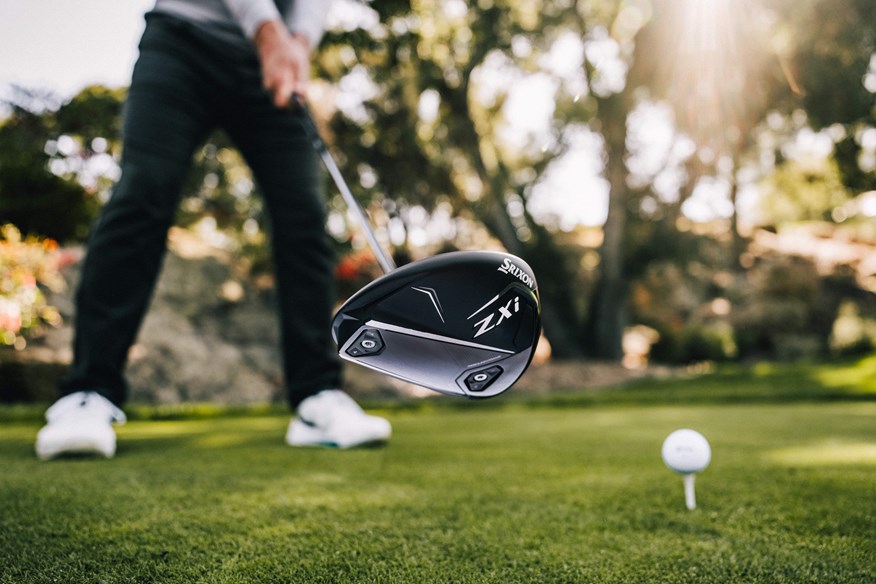

The Srixon ZXi LS is our testing pro’s choice driver of 2025 and with plenty of reason. Srixon have done a stellar job designing a super clean look to their equipment that provides a nice understatement to the performance on offer. While it didn’t out and out win in the Low Spin category, it produced numbers that Neil, our pro, was impressed with while also being one of his favorite heads to look down at. Srixon do have star power on tour, but have always struggled to really compete with the major OEM's in the metalwood category. 2025 feels like a step in the right direction, if they can market it correctly.
What our tester says:
I love how the Srixon ZXi series looks. There’s nothing busy about it, it's nice and simple. The matte crown appeals to me but I’ve been really surprised by how well it flies. It'll be a great driver for more golfers than just the normal LS player, and although I would pick the LS, I'm liking all 3 models available from Srixon in 2025, making this a very healthy lineup from a brand that needs a boost in drivers.
You can read our full review of the Srixon ZXi LS Driver here
Key drivers test data:
Ball Speed 164.4 mph | Carry 289.4 yards | Spin (Total) 2,365 rpm | Launch Angle 12.7º | Height 37.2 yards | Descent Angle 41.7º | L-R Dispersion 46.8 yards
Pros
- Test Pro's Choice Driver award of 2025
- Great for a wide variety of golfers
- Classic looks that will suit any bag
Cons
- Spins more than most Low Spin models
| RRP | £549.00 / $549.00 |
| Lofts | 8º (RH), 9° (RH/LH), 10.5º (RH) |
| Head Size | 460cc |
| Lie | 59º |
| Stock Shaft Length | 45.75” |
| Stock Shaft Options | Project X HZRDUS Black Gen 5 60g and 70g |
| Stock Grip | Golf Pride Tour Velvet 360 |
- Patented i-Flex Face Technology
- Star Frame Crown Design
- Precision Laser Face Milling
- Tour-Proven Rebound Frame Structure
- Premium Shaft Options
- Full Weight and Loft Adjustability
Best Golf Drivers 2025: The full comparison
Here you’ll find a comprehensive list of every model and their performance metrics in the 2025 Drivers Test.
| Make | Model | Club Speed (mph) | Ball Speed (mph) | Carry Distance (yds) | Spin Rate (rpm) | Launch Angle (°) | Peak Height (yds) | Descent Angle (°) | L-R Dispersion (yds) |
|---|---|---|---|---|---|---|---|---|---|
| TaylorMade | Qi35 LS (forward) | 119.1 | 167.0 | 298.0 | 2266 | 13.0 | 38.2 | 40.0 | 23.3 |
| Titleist | GT3 | 117.3 | 165.7 | 292.8 | 2378 | 13.0 | 38.9 | 41.6 | 25.2 |
| Titleist | GT4 (forward) | 116.6 | 165.1 | 292.4 | 2274 | 12.9 | 37.1 | 39.9 | 33.3 |
| Callaway | Elyte Triple Diamond (forward) | 116.5 | 165.0 | 290.8 | 2202 | 11.6 | 32.3 | 36.9 | 33.7 |
| Wilson | Dynapwr Carbon (forward) | 117.0 | 165.2 | 289.9 | 2442 | 12.8 | 38.1 | 42.0 | 44.3 |
| Ping | G440 LST | 115.6 | 164.7 | 289.8 | 2502 | 13.7 | 41.6 | 43.8 | 17.7 |
| Srixon | ZXi LS (forward) | 117.6 | 164.4 | 289.4 | 2365 | 12.7 | 37.2 | 41.7 | 46.8 |
| Cobra | DarkSpeed LS (forward) | 117.9 | 164.4 | 287.1 | 2504 | 13.3 | 39.9 | 42.7 | 34.8 |
| PXG | Black Ops Tour (back) | 114.8 | 162.9 | 286.4 | 2126 | 12.6 | 33.1 | 38.4 | 45.6 |
| Wilson | Dynapwr LS (forward) | 114.6 | 162.2 | 286.4 | 2228 | 12.8 | 35.1 | 39.6 | 13.6 |
| PXG | Black Ops Tour (forward) | 112.5 | 164.5 | 286.2 | 2204 | 11.2 | 30.4 | 36.8 | 25.4 |
| Callaway | Elyte Triple Diamond (back) | 116.1 | 164.2 | 286.2 | 2516 | 12.8 | 38.3 | 41.7 | 25.7 |
| Wilson | Dynapwr Carbon (back) | 115.6 | 165.3 | 284.8 | 2682 | 11.7 | 37.4 | 42.3 | 16.1 |
| TaylorMade | Qi35 LS (back) | 117.4 | 165.6 | 284.6 | 2715 | 11.9 | 37.6 | 42.0 | 39.0 |
| Cobra | DarkSpeed LS (back) | 117.4 | 165.2 | 284.2 | 2778 | 12.3 | 39.8 | 43.3 | 32.1 |
| TaylorMade | Qi35 Core (forward) | 116.1 | 163.0 | 283.7 | 2284 | 11.8 | 32.5 | 37.7 | 27.0 |
| Callaway | Elyte Core | 117.3 | 165.3 | 283.3 | 2692 | 11.4 | 35.7 | 40.8 | 26.1 |
| Srixon | ZXi LS (back) | 116.4 | 161.8 | 282.6 | 2337 | 11.8 | 33.3 | 39.4 | 33.0 |
| Callaway | Elyte X | 116.0 | 163.9 | 282.2 | 2585 | 11.9 | 35.4 | 40.5 | 26.7 |
| Wilson | Dynapwr LS (back) | 114.6 | 161.6 | 282.1 | 2408 | 12.9 | 36.8 | 41.4 | 15.9 |
| Ping | G440 Max | 115.1 | 163.1 | 281.8 | 2702 | 12.9 | 39.9 | 43.7 | 31.9 |
| Mizuno | ST-Max | 115.1 | 162.4 | 281.7 | 2519 | 12.8 | 37.3 | 42.1 | 32.3 |
| Cobra | DarkSpeed X (forward) | 116.2 | 161.1 | 281.4 | 2443 | 12.9 | 37.1 | 42.1 | 36.7 |
| Titleist | GT2 | 115.5 | 163.1 | 280.4 | 2728 | 12.1 | 37.9 | 41.9 | 26.2 |
| PXG | Black Ops (forward) | 113.7 | 163.1 | 280.1 | 2610 | 11.2 | 34.0 | 40.3 | 25.6 |
| PXG | Black Ops (back) | 113.2 | 162.5 | 278.0 | 2696 | 12.0 | 36.7 | 42.1 | 41.9 |
| Cleveland | HiBore XL | 113.6 | 160.3 | 277.9 | 2561 | 12.5 | 36.7 | 41.9 | 24.7 |
| Titleist | GT4 (back) | 117.2 | 163.1 | 277.7 | 2876 | 12.8 | 39.7 | 43.5 | 50.9 |
| Cobra | DarkSpeed X (back) | 116.7 | 161.4 | 276.8 | 2777 | 12.9 | 39.6 | 44.0 | 21.5 |
| Cobra | Max D | 117.7 | 163.3 | 276.1 | 2963 | 13.0 | 42.1 | 45.3 | 29.2 |
| Cobra | Max K | 114.6 | 160.6 | 276.1 | 2646 | 12.2 | 36.0 | 41.8 | 33.5 |
| TaylorMade | Qi35 Core (back) | 115.9 | 162.4 | 275.8 | 2856 | 11.7 | 36.7 | 41.9 | 17.9 |
| Srixon | ZXi Core | 115.3 | 161.1 | 275.4 | 2822 | 13.4 | 40.9 | 45.0 | 48.4 |
| TaylorMade | Qi35 Max | 115.8 | 162.3 | 275.4 | 2825 | 11.4 | 35.7 | 41.3 | 16.7 |
| Ping | G440 SFT | 115.9 | 161.8 | 275.3 | 2859 | 13.7 | 41.9 | 46.8 | 42.5 |
| Wilson | Dynapwr Max | 113.9 | 161.5 | 273.2 | 2887 | 12.6 | 38.8 | 44.0 | 18.7 |
| Average | 116.0 | 163.5 | 283.3 | 2554 | 12.4 | 37.1 | 41.6 | 31.4 |

The 2025 Drivers Test: Explaining the Numbers
We’ve added some new data to the testing categories this year, so we thought we’d give you a quick explainer of what the less commonly known ones mean.
All our data has two sets of numbers, ‘average’ and ‘standard deviation.’
Average – the sum of all shots hit, divided by the amount of shots.
Standard Deviation – the variation in the data set collected. A higher number will mean a wider variety in the shots hit, lower numbers mean tighter performance.
We’ve also included some information on the important numbers you’ll be looking at:
Clubhead Speed – How fast the driver is traveling at impact. Measured in miles per hour.
Ball Speed – How fast the golf ball comes off the driver face at impact. Measured in miles per hour.
Carry Distance – How far the golf ball traveled through the air before hitting the ground. Measured in yards.
Total Distance – How far the golf ball traveled both through the air and with the predicted roll-out. Measured in yards.
Spin – The amount of times the golf ball completed a full turn around its centre over a set amount of time. Measured in rotations per minute.
Launch Angle – The angle that the golf ball exited impact at in relation to the ground. Measured in degrees.
Height – The highest apex distance from the ground that the golf ball achieved during its flight. Measured in feet.
Descent Angle – The trajectory at which the golf ball impacts the ground at. A steeper angle will produce less roll-out but could help with carry distance. A shallow angle can reduce carry distance but will create more total distance from roll-out when optimized. Affected by Ball Speed, Spin, and Launch Angle.
Dispersion – The difference between the furthest shot left and the furthest shot right during our testing. This is to show how consistent each driver is with finding the target.
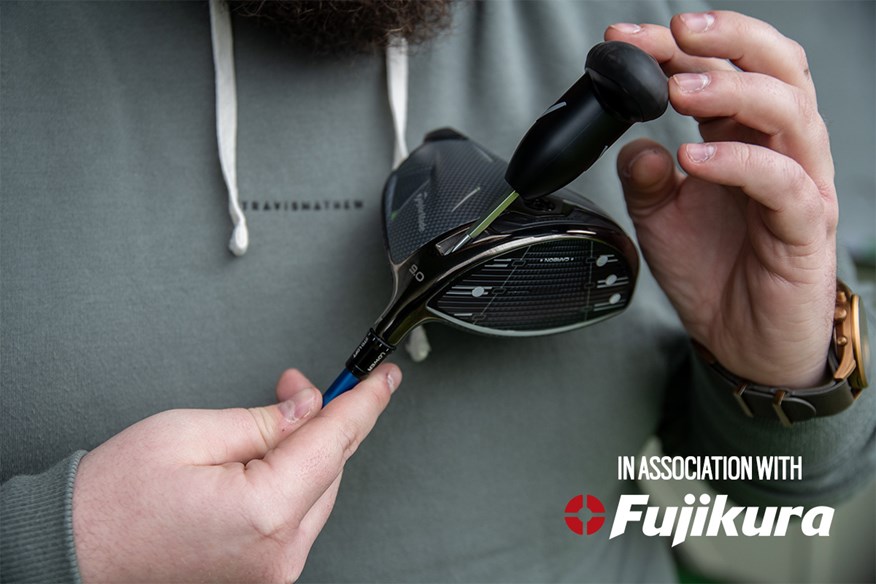
Best Golf Drivers Buying Guide
Driver design innovations in 2025
Last year saw some of the biggest driver innovations for a decade as brands focused strongly on forgiveness. Increased MOI (Moment of Inertia) delivered more stable clubheads that boosted distance and accuracy on off-centre strikes.
If 2024 was the year of MOI drivers, what is the theme in 2025? Based on the key technologies being lauded, 2025 might well be the year of lower spin.
Callaway’s Elyte drivers and the Titleist GT series are both using ‘Thermoform Carbon’ crowns to reposition weight and lower the centre of gravity (CG) to decrease spin.
The TaylorMade Qi35 drivers use a blend of premium materials to retain forgiveness while bringing down CG to the lowest they’ve ever had it. And Ping, with their G440 drivers have innovated with a ‘Free-Hosel Design’ that gives them discretionary mass to place on the sole for a deeper, rearward CG position.
Cobra, Srixon, Wilson, and PXG have also optimized the launch and spin conditions of their new driver designs as they seek to rival the big boys.
The importance of centre of gravity (CG)
One of, if not the most important aspects of modern driver design is CG (Centre of Gravity) placement. CG will help dictate the characteristics of the driver by influencing how the head wants to present itself during impact and how it reacts to different strikes.
While CG overall is a way to describe the point that the driver’s weight is balanced in all directions, and is measured over three planes: the X-, Y-, and Z-axis.
Shot Shape
X-Axis is about heel-to-toe location and can influence how much draw or fade bias a driver can have. If I’ve put the Centre of Gravity closer to the heel, the club will be easier to square up and can help with fighting a cut shot or open-face strikes. The driver will be harder to close if the weight is in the toe.
Ping’s G440 SFT and Cobra’s DarkSpeed-Adapt Max D are both heel-bias CG drivers to help golfers who struggle with slices or cut shots. The Srixon ZXi driver can be flipped between heel and toe CG positions.
Spin
The Y-Axis is high-to-low (or crown to-sole) and changes the driver spin rates. If I have CG higher in the head, impacts below that placement will cause the driver to ‘deflect’ downwards and cause the ball to spin more through ‘Gear Effect.’ Conversely, lower CG will mean more of the face will resist the backspin being created.
The TaylorMade Qi35 driver’s story is all about how the company have brought CG lower in the head than last year’s Qi10.
Forgiveness
Finally, the Z-axis is the front-to-back placement, affecting the forgiveness and power potential of the driver. The easiest way to think of this is by imagining a triangle down the middle of the club with the point towards the rear of the head.
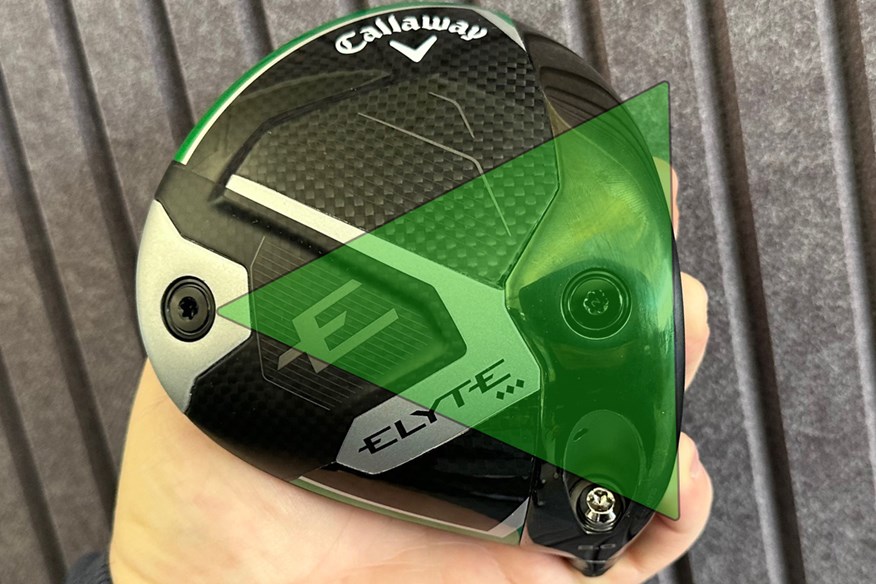
If we move the point further back, the triangle has a wider base at the driver face. If we move the triangle higher up, the point is closer to the face so the triangle has a narrower base.
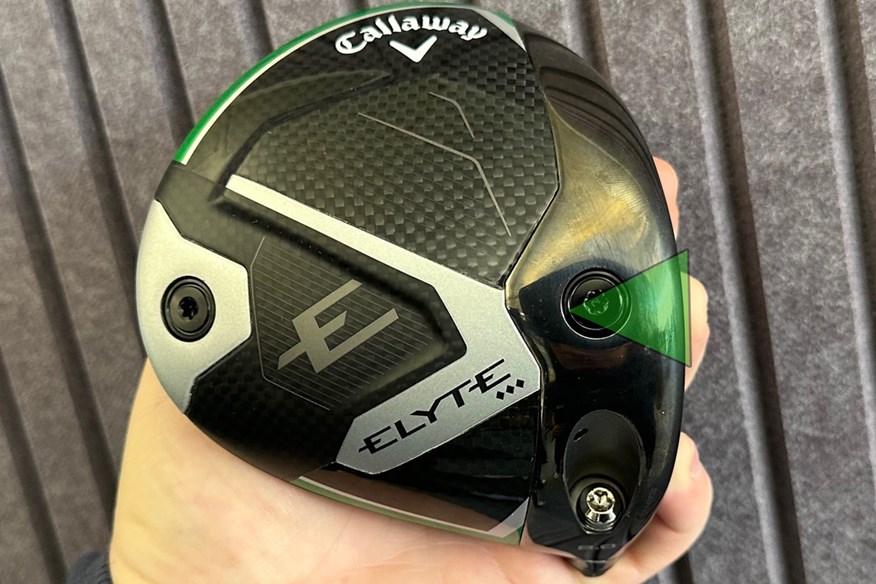
Think of CG like the triangle, the further back it is the more influence it has on the rest of the face, helping stabilize a wider spread of strikes. The further forward CG has less stability on off-centre impact, but it’s more concentrated in the middle.
This is what golf equipment manufacturers mean when they talk about MOI, or Moment of Inertia. It’s the driver’s resistance to twisting on bad contact, helping retain ball speed, distance, and keeping the ball straighter.
The further back you can get CG, the higher the MOI rating. This is what the new models of 10K drivers, such as Qi35 Max, are offering.
A forward-CG driver, meanwhile, can give you great ball speed and power by producing a ‘hotter’ spot in the centre, but if you aren’t finding the middle consistently then you’re going to suffer greater performance drop-off. Titleist’s GT4 and Callaway’s Elyte Triple Diamond fall into this category.
Some Drivers, like the Qi35 or the Srixon ZXi LS, have weights that can be swapped between forward and back positions to alter Z-axis CG.
Loft
Finding the right loft is one of the most important elements to consider with a new driver. Possibly the biggest influence on key metrics including spin, launch, height, and descent angle, it will also impact the speed and distance of your drives. More loft works better for slow swing speeds, or golfers that hit ‘down’ on the ball. Less loft works better for faster swing speeds or golfers that hit ‘up’ on the ball.
Adjustability
As we mentioned with Centre of Gravity, some drivers can be altered to suit different players’ needs. This can come in the format of the moveable weights you see with Ping’s G440 Max or Callaway’s Elyte or with a fixed position that can have different weights installed like the Titleist GT2 offers.
Golfers are also now being given loft and lie options with every major brand on the market. Cobra have engineered their all-new FutureFit33 loft sleeve, giving you more setup positions than any brand ever has before.
Working with the right professional to find the correct choice in the plethora of settings now available is paramount.
Custom fitting
While it’s 2025 and we’re in the most advanced position we’ve ever been in with fitting technology, a surprising number of golfers are still just buying off-the-shelf models.
Visiting a custom fitter doesn’t have to come with an extortionate price point or the upcharges you’ve been led to believe. A lot of custom-fitted clubs can be purchased at the same price as the stock options but giving yourself the best chance at striking the ball out the middle and finding your target is essential to playing better golf.
Budget
Drivers, like everything, are getting more expensive, no doubt. I think there are two ways of considering the budget you want to commit to when searching for a new driver.
If you’re new to the game of golf, or progressing rapidly in your golf game, it may not be the best idea to commit to a $600 driver immediately as there is a strong chance your needs will also change within 12-18 months (although if you can don’t mind the cost, we wouldn’t want you to dismiss a new model driver).
The alternative is to consider how long you’ll likely have the driver for. Golfers keep their woods for five years on average, so I’d think about how the price will break down over the length of time you’ll have the club in your bag.
A $600 driver over five years is $120 a year – that’s a far more reasonable amount for the use you’ll get out of it each year. There’s also the option of a used driver, where you’re able to get a previous model for a fraction of the original price.
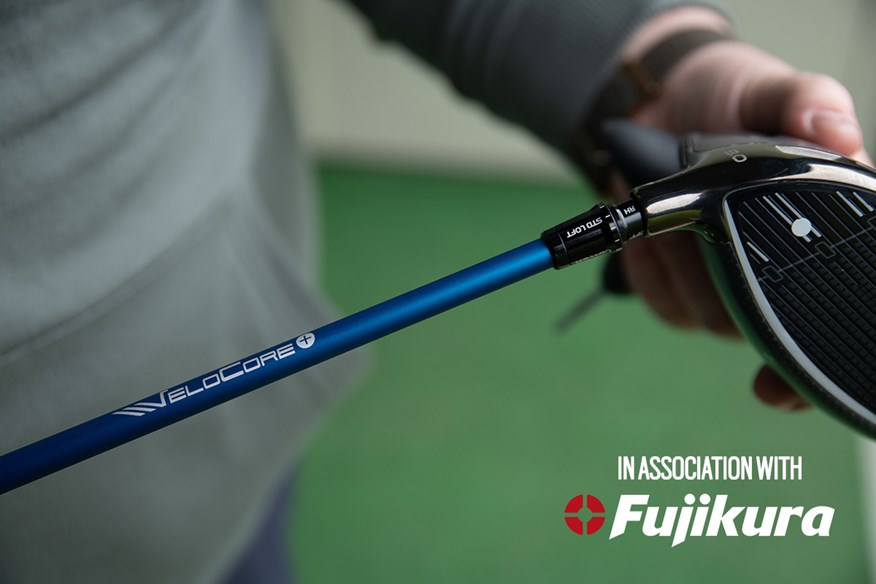
Best Golf Drivers: Frequently Asked Questions
How do I find the right driver for me?
The best way to find the right driver for you is to go and test golf clubs. You can use our handy driver guide above to get a good idea to start with, but the bottom line is that you need to go and try them yourself. You can test them at a larger retail store or independent fitter, but make sure it’s done with someone who knows what they’re talking about so you get the best driver for your game.
How much should I spend on a driver?
How much you spend on a driver should be based on your budget. If you can afford to purchase a fully custom-fit product with a high-grade custom at $700-1000 and are happy to, then go ahead. If you’re not as comfortable spending that amount, or if you’re new to the game and expecting to improve rapidly, you can purchase a great second-hand option for a lot less.
Some brands also carry models over into the following years, so you can get a one or two-year-old driver for a reduced price over when it was new.
What is the longest driver?
The longest driver in our 2025 test was the TaylorMade Qi35 LS model, although that is for one golfer. You should still be fitted for the right product to see what is longest for you, as the lowest-spinning may not be your best choice.
You can see how some of the lowest-spinning drivers compare to the most forgiving drivers here.
What is the straightest driver?
The straightest driver is the one that works best for you. There are some contributing factors, like how much spin the driver is producing, that helps to keep the ball stable in the air, but not every brand will be the same for you.
Finding a driver that you can consistently deliver to impact in the same way will be your straightest. Starting with the most forgiving drivers is a great place to start though.
What is the longest forgiving driver?
The longest and most forgiving driver during our testing was the Wilson Staff Dynapower LS driver. It came 11th in carry distance and 1st in left-right dispersion, but the standard deviation for both these metrics was incredibly tight over some of the slightly longer drivers.
But just because the DynaPower came out on top for our tester, that doesn’t mean that this driver is the right one for you. Ultimately, you should still try clubs for yourself.
Which driver is easiest to hit?
The easiest driver to hit in 2025 was the Ping G440 SFT driver. It ranked 1st for launch and 2nd in peak height, also coming 6th in left-right dispersion. Our testing showed it was the easiest driver to get into the air, with a very consistent dispersion, if you’re looking to make life easier from the tee.
We’d still say test a few different drivers alongside the Ping G440 SFT though, as you may suit something different.
What driver does Rory Mcilroy use?
Rory McIlroy currently uses a TaylorMade Qi10 driver, although is expected to switch into one of TaylorMade’s new Qi35 models imminently.
What degree driver goes the farthest?
The degree of driver that goes furthest is relative to your clubhead speed (or how fast you swing) and your swing, in general. Faster speeds or positive Angle of Attack swings will benefit more from lower degrees of loft. Slower speeds or negative Angle of Attack swings could see better results from more loft.
What flex should my driver shaft be?
Your driver flex is best found by going to see a custom fitting specialist. Traditionally, shaft flex is dictated by how fast you swing the club, but there are many more factors that play into shaft design. Read our guide on how to choose the best driver shaft.
-
 The Best Golf Drivers of 2025
The Best Golf Drivers of 2025
-
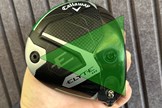 Drivers with CG further back are more forgiving across the whole face
Drivers with CG further back are more forgiving across the whole face
-
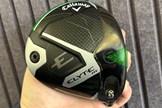 Drivers with further forward CG are less forgiving but offer more concentrated ball speed
Drivers with further forward CG are less forgiving but offer more concentrated ball speed
-
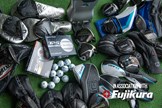 We use stringent testing criteria to make sure our tests are as accurate as possible
We use stringent testing criteria to make sure our tests are as accurate as possible
-
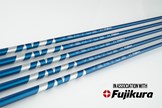 The Fujikura Ventus Blue is our chosen testing model and provides industry-leading consistency and performance
The Fujikura Ventus Blue is our chosen testing model and provides industry-leading consistency and performance
-
 The Fujikura Ventus shaft, with VeloCore+ technology, was used in every head this year.
The Fujikura Ventus shaft, with VeloCore+ technology, was used in every head this year.
-
 Neil Wain is a highly proficient golfer and coach, who assists in our 2025 testing
Neil Wain is a highly proficient golfer and coach, who assists in our 2025 testing
-
 Ross Tugwood has worked for some of the biggest sports institutions in the UK to improve athlete performance
Ross Tugwood has worked for some of the biggest sports institutions in the UK to improve athlete performance
-
 The TG team made sure all data collected was as accurate as possible
The TG team made sure all data collected was as accurate as possible
-
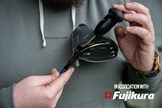 Making sure the driver is set up correctly is a key part of finding the right model
Making sure the driver is set up correctly is a key part of finding the right model
-
 We use TaylorMade's TP5x balls in our 2025 driver testing
We use TaylorMade's TP5x balls in our 2025 driver testing



